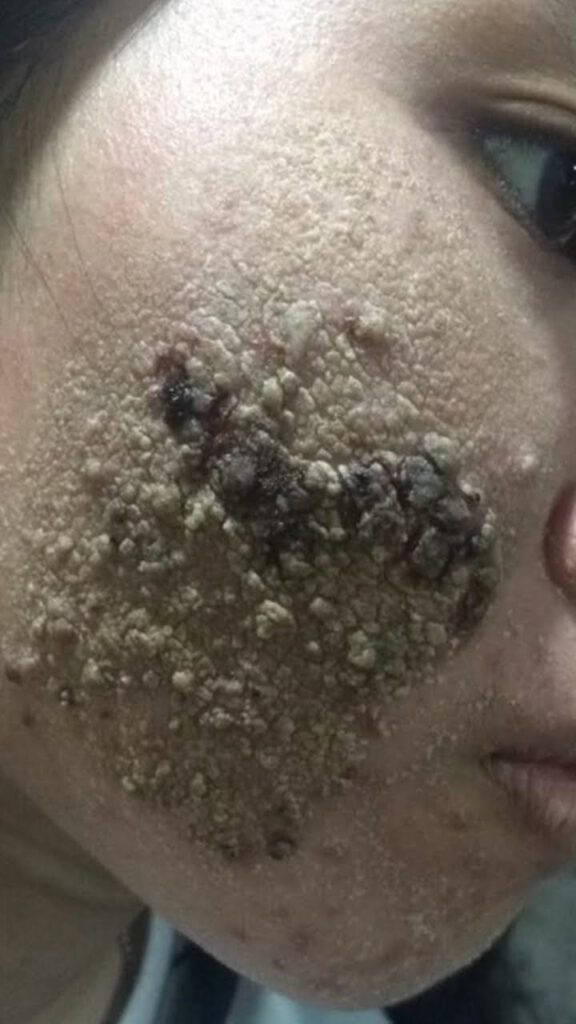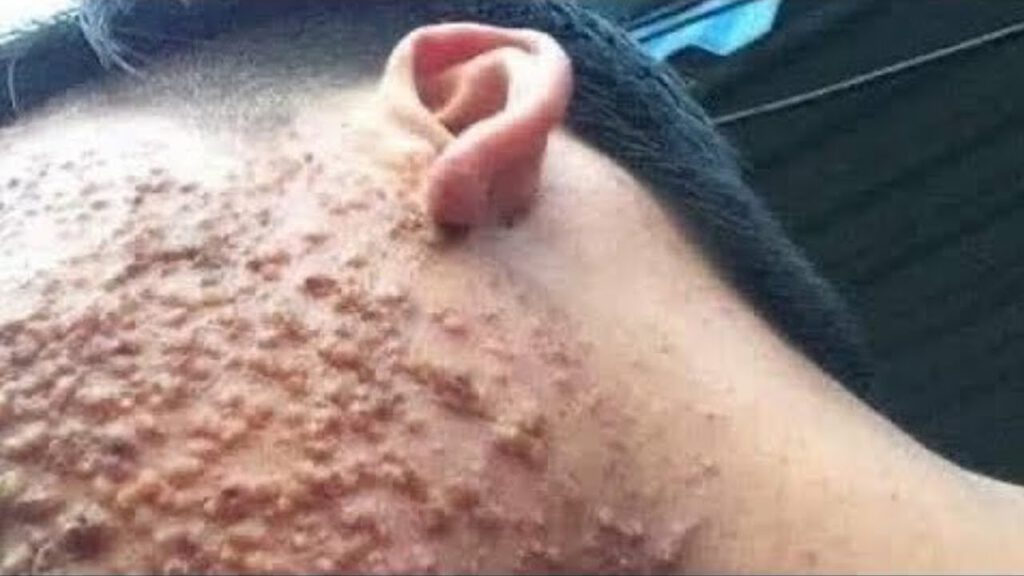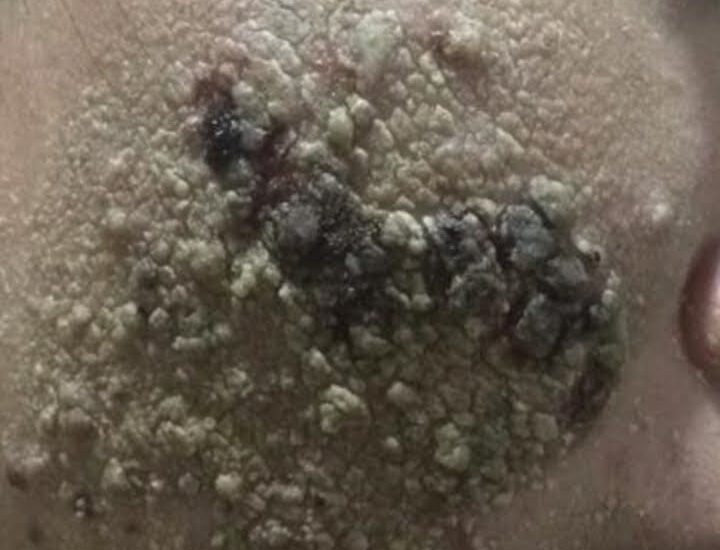Why cystic acne develops
Cystic acne is the most serious type of acne. It develops when cysts form deep underneath your skin. This can result from a combination of bacteria, oil, and dry skin cells that get trapped in your pores.
Although anyone can develop acne, cystic acne tends to occur in people with oily skin. It’s also more common in teens, women, and older adults with hormonal imbalances.
Usually, cystic acne can improve with age. However, the stubborn and painful bumps won’t go away on their own. If you suspect you have cystic acne, your dermatologist is your best line of defense. They can prescribe the medication necessary to help clear your skin.
Keep reading to learn how to identify cystic acne and navigate your treatment options.

How to identify cystic acne
Aside from being the most serious form of acne, cystic acne also tends to be the largest in size. It’s also deeper within the skin. All other types appear to rest on top of the skin’s surface.
Cystic acne often looks like boils on the skin. Other identifying characteristics include:
- large pus-filled cyst
- large white bump
- redness
- tender or painful to the touch
Acne cysts are perhaps most noticeable on a person’s face. But they’re also common on the chest, neck, back, and arms. Cystic acne may even develop on the shoulders and behind the ears.

Due to the severity of cystic acne, over-the-counter (OTC) treatments for acne aren’t strong enough. This means you’ll need to see a dermatologist for prescription medications. Depending on the type of treatment used, you may not see full results for up to eight weeks.
Talk to your doctor about the following methods used to treat cystic acne. Some cases require combination therapies.
Isotretinoin
Isotretinoin (Accutane), a powerful prescription medication, is considered the most effective treatment measure for cystic acne. It’s derived from a powerful form of vitamin A, taken in tablet form every day.
About 85 percent of people who take it experience improvements within four to six months. Despite the efficacy, there are some serious risks associated with isotretinoin.
Talk to your doctor if you experience any of the following:
- new or worsening mood disorders
- inflammatory bowel disease
- persistent headaches or nosebleeds
- bruising
- skin inflammation
- blood in your urine
- muscle and joint pain
Oral antibiotics
Oral antibiotics may be used to treat cystic acne if it covers a large area of your skin. These work by decreasing bacteria and inflammation that could be contributing to cystic acne formation. However, antibiotics don’t alleviate excess oil and dead skin cells.
Antibiotics should only be used in the short term, due to concerns over bacterial resistance. If antibiotics aren’t effective, then your doctor will likely recommend you start taking isotretinoin.
Possible side effects of oral antibiotics may include:
- abdominal pain
- diarrhea
- nausea
- sun sensitivity
- vomiting
Learn more: The myth of antibiotics and birth control »
Topical retinoids
Topical retinoids are also derived from vitamin A. However, these don’t have quite the strength of isotretinoin. These work by unplugging hair follicles to remove and prevent severe acne.
Retinoids are sometimes used in conjunction with topical antibiotics to make them more effective. Topical retinoids can be used on a daily basis and come in the form of creams, gels, and lotions.
While one OTC retinoid (adapalene) is currently available, cystic acne is usually only responsive to prescription-strength formulas.
These include:
- Avage
- Avita
- Differin
- Retin-A
- Tazorac
Using topical retinoids can make your skin red and can also cause it to peel. These side effects are usually temporary as your skin gets used to the medication. Retinoids can also make you more susceptible to sunburn, so be sure to wear sunscreen.
Spironolactone
Spironolactone (Aldactone) is another possible prescription treatment measure for cystic acne. Traditionally, it’s used as a diuretic to help treat edema and high blood pressure. In terms of acne, this medication can work by managing excess androgen levels that could be contributing to inflammatory acne. It’s typically only effective in women with acne on their jawline or lower face.
